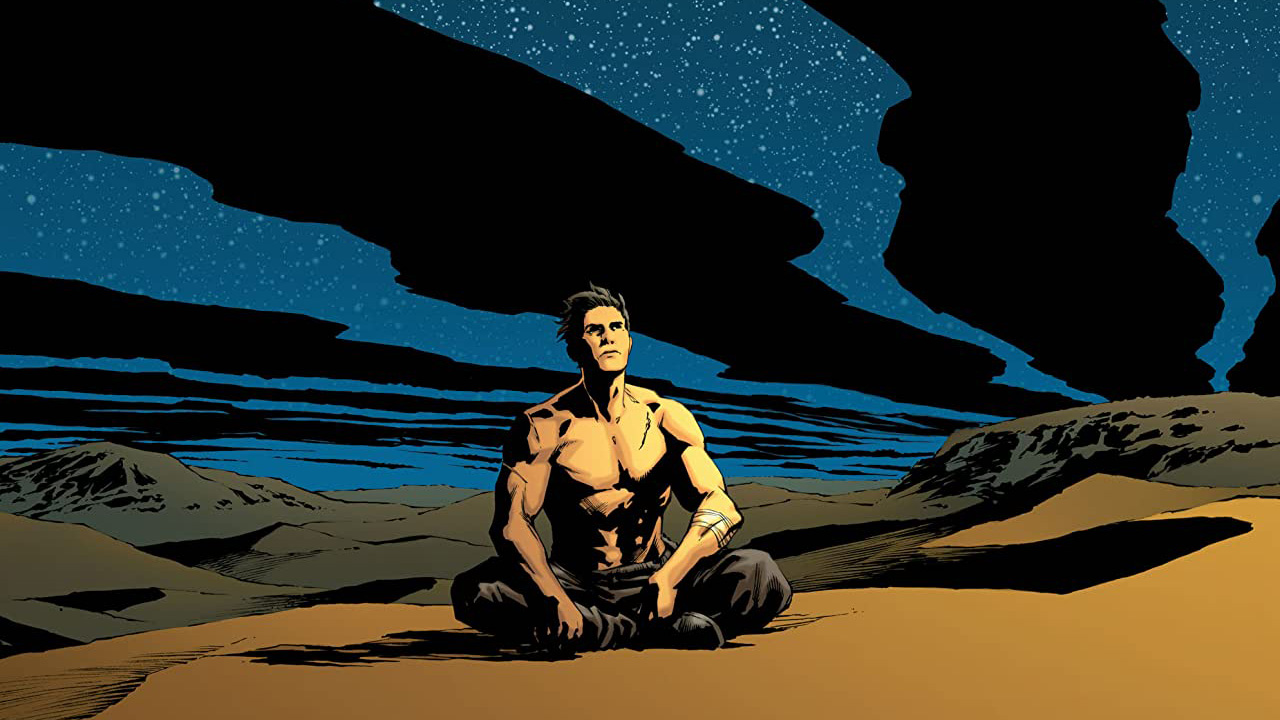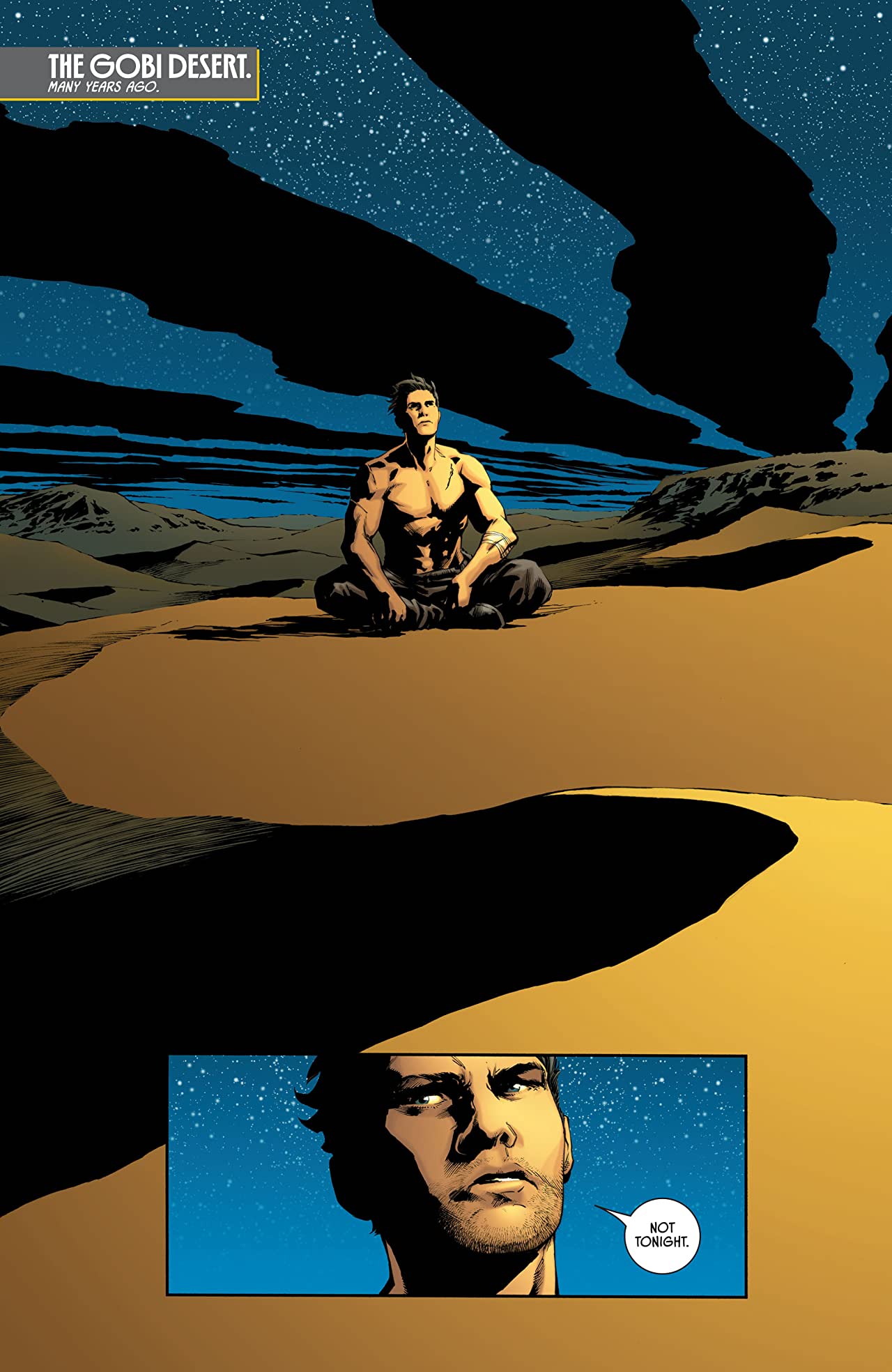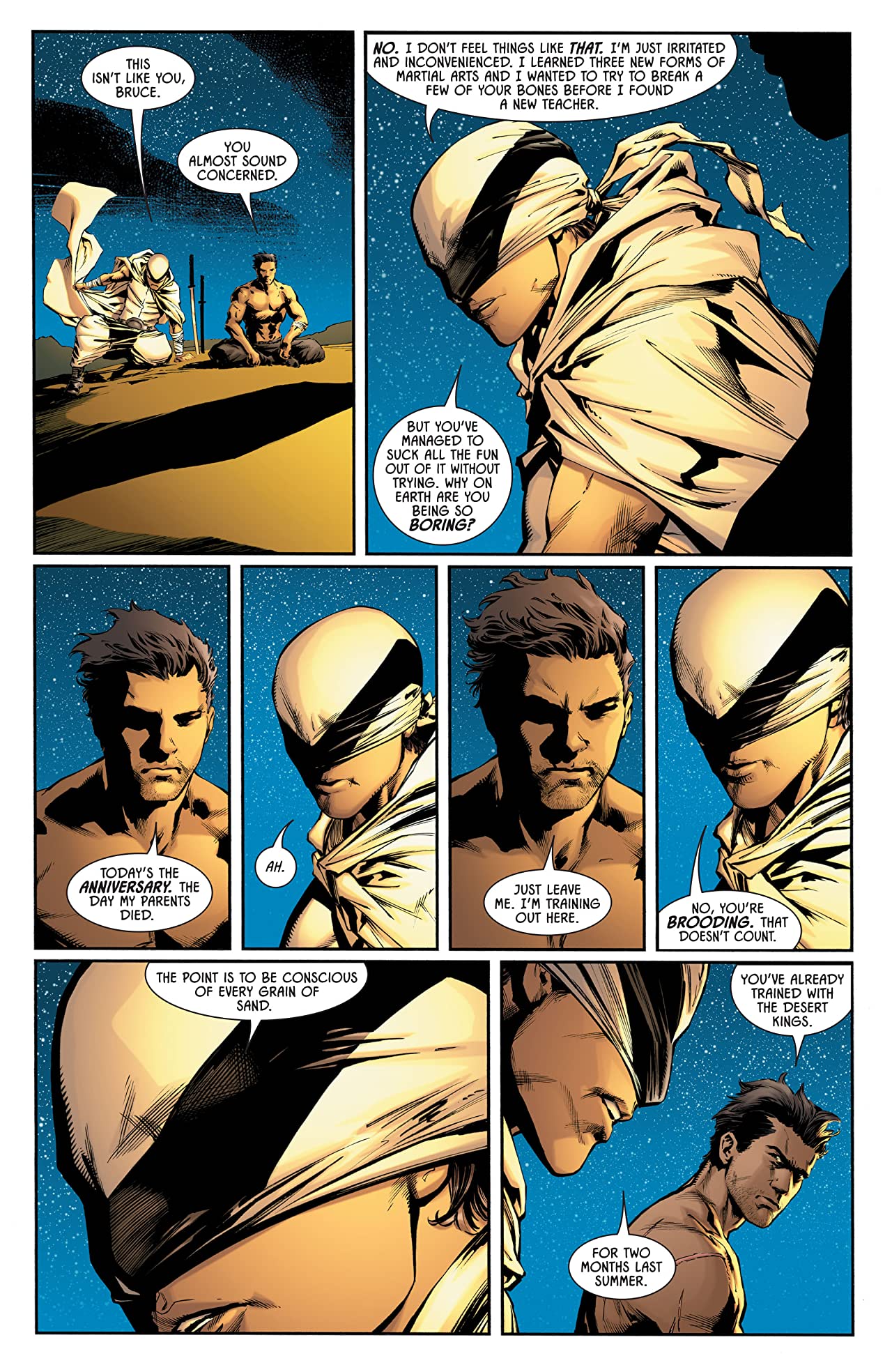Best Shots review: Batman #103 "about finding yourself in the aftermath of a great trauma"
James Tynion IV's strongest Batman issue to date with #103

After reading Batman #103, it's hard not to like James Tynion IV's 'back to basics' approach to Batman. Alfred is gone. So is Wayne Manor, Bruce's wealth, the Batcave, and even the Joker. In the aftermath of 'The Joker War,' Tynion has been very intentional in navigating a new definition for the World's Greatest Detective. And in doing so, he's playing to his strengths as a writer even if a couple of his choices feels like well-trodden paths. Carlo Pagulayan and Guillem March are not my idea of an art pair that is particularly complementary but the work isn't bad - it just doesn't fit together well. Thankfully, both are skilled enough draftsmen that they are still able to effectively highlight Tynion's character work.
Written by James Tynion IV
Art by Carlo Pagulayan, Danny Miki, Guillem March, and David Baron
Lettering by Clayton Cowles
Published by DC
'Rama Rating: 8 out of 10
It's been said before but it's worth repeating that Tynion's work has shined when he's able to make larger than life characters feel relatable and imbue the third and fourth stringers with the same weight that the real icons have. It's a tightrope act and one that many writers have a hard time with. Tynion himself struggled to find a balance early in his Batman run. Is Batman mythological justice incarnate? Is he a broken man who became a vigilante to sort out his trauma? Is he something bigger than the sum of his parts? All of these? None of them?
In a lot of ways, Tynion just sort of answers yes to all of the above questions. Superhero comic books are full of wonderful inconsistencies after all and Tynion is not interested in neatly sorting them out for anyone. Tynion is an easy writer to like from a fan perspective because when he's clicking with his art team, it's clear that the details that he includes are references to and reimaginings of the ones that he fell in love with as a fan, such as the Bat-Family coming together at the end of 'Joker War.'
It's interesting, then, that Tynion has created Ghost-Maker - a long lost rival from Bruce's past has the kind of no nonsense approach to crime-fighting that we've seen from Red Hood, Punisher, and Azrael to name just a few. Characters like this often show up to test the hero's resolve and eventually show readers that the hero is incorruptible. But Joker is always testing Batman's pledge not to kill. And Harley questioned Batman's methods in the last arc. So what gives?
The keyword is 'trauma.' It's true that this is another common thread in superhero stories as most heroes are defined by some great failure in their past that spurs them on to doing good. But it's Ghost-Maker's flippancy and disrespect for what Bruce holds onto that makes this approach different from what we saw Tom King do with the character most recently. Batman is being challenged about the event that defines him at a time when the details of his life that frequently define him have largely been stripped away.
This is a story about finding yourself in the aftermath of a great trauma and we see that echoed in the B plots with Clownhunter, Harley Quinn, Punchline, and, to some extent, Ghost-Hunter, as well. It's too early to tell whether or not Ghost-Hunter will be a meaningful part of the Bat universe moving forward but he serves a perfect purpose right now and that's allowing Tynion to have a character that acts as a pretty direct vessel for the themes of the book. Character work is Tynion's biggest strength and he's finally figured out how to deliver it with Bruce Wayne.
I mentioned Pagulayan and March being a bit of an odd combination for this book and that's immediately clear once March takes over in the second half of the book. Pagulayan's linework is extremely strong, enabling colorist David Baron to provide some consistency from scene to scene by leaning into the contrast provided by the shadows inherent in Pagulayan's layouts. It's real meat-and-potatoes superhero storytelling but that's always been Pagulayan's calling card and for a story that's trying to remind us of the platonic ideal of Batman, that works.
Get the best comic news, insights, opinions, analysis and more!
Guillem March gets saddled with most of the Harley Quinn work in this issue and it doesn't work quite as well. His fight choreography is confusing and his narrative storytelling choices from panel-to-panel are odd. And his Harley Quinn has the same face as basically every woman he draws. But he begins to hit his stride toward the end of the issue. A better inking job could have brought a lot more consistency to the issue as March's lines feel frail next to Pagulayan and his penchant for hatching when shading really makes that obvious.
Artistic inconsistencies aside, I think this is thematically the strongest that Tynion's Batman run has ever been dating back to his earliest work with the character. It finally feels like it has a vision moving forward rather than the sort of slapdash, fill-in feel that marked 'Their Dark Designs.' I think it's easy to get caught up with a character like Batman and that even when you have something to say with him, the status quo might not be where it needs to be to let you tell that story. 'Joker War' was Tynion flipping over the gameboard (for better or worse, depending on who you talk to) so that he could write a Batman that felt closer to what he loves about the character. That is finally coming through in the work and I'm excited to see what comes next.
Keep abreast of the latest Dark Knight stories with our ever-refreshing list of the new Batman comic books, graphic novels, and collections in 2020 and beyond.
Pierce Lydon has been a contributor to Newsarama for over 10 years, writing everything from reviews to deep dive explainers, to interview pieces and best lists.






